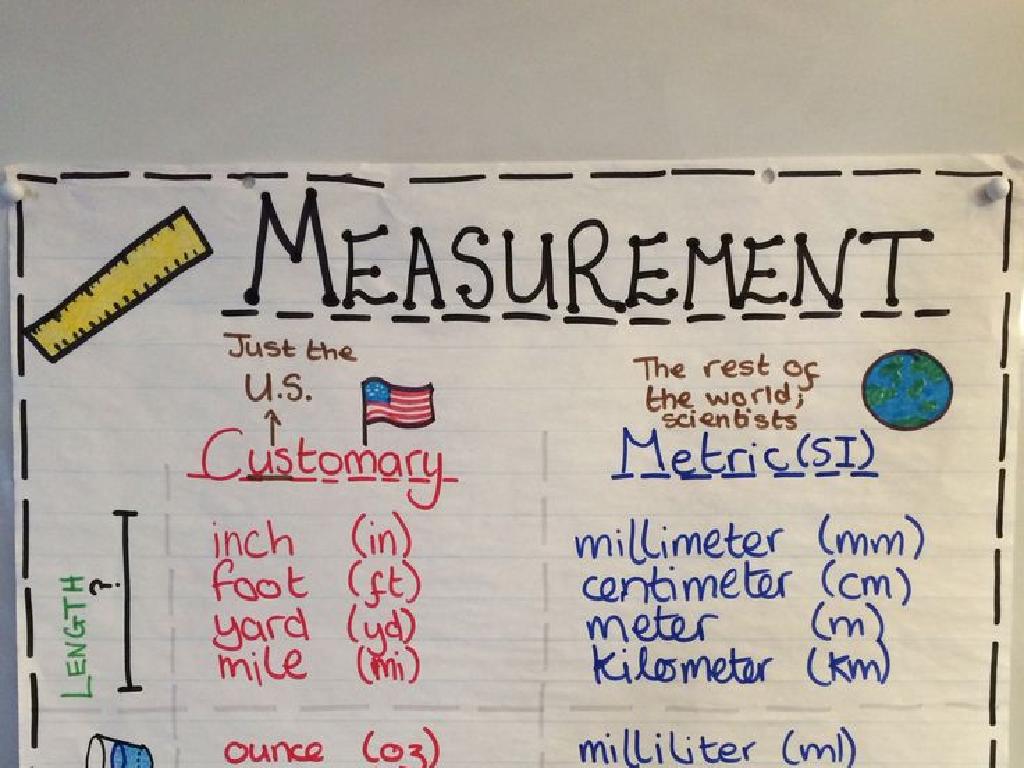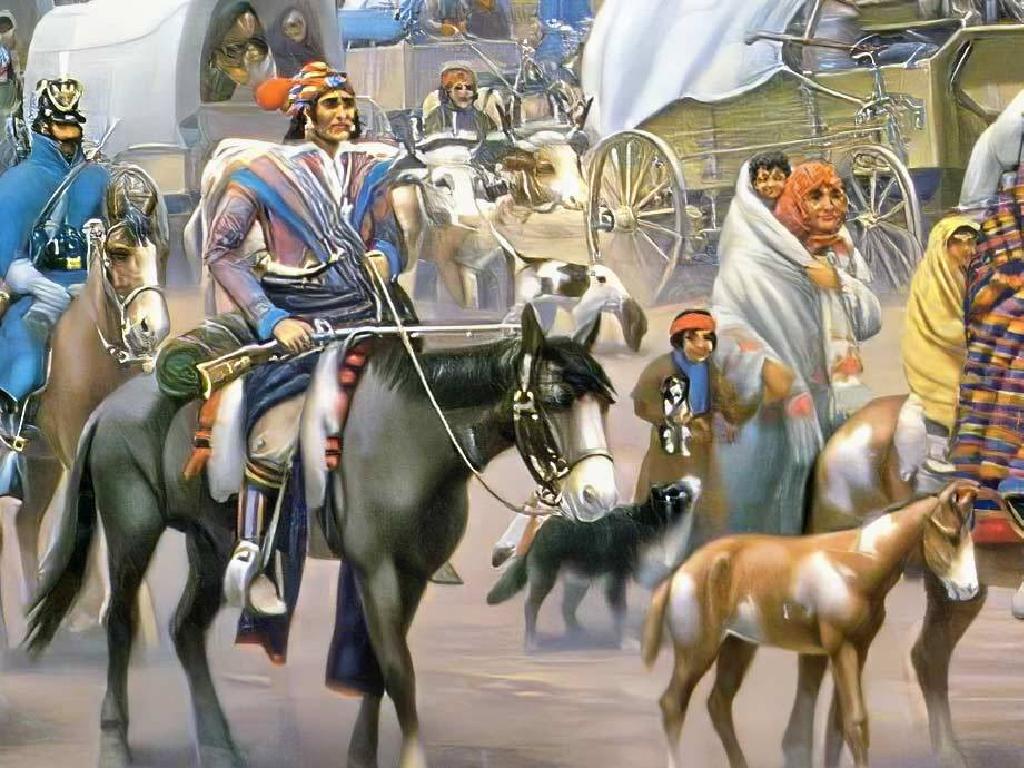Analyze Passages From Harriet Tubman: Conductor On The Underground Railroad: Part 2
Subject: Language arts
Grade: Sixth grade
Topic: Nonfiction Book Study
Please LOG IN to download the presentation. Access is available to registered users only.
View More Content
Exploring Harriet Tubman’s Legacy
– Harriet Tubman’s early life
– Born into slavery, Tubman escaped and became a leading abolitionist.
– Tubman’s role in the Underground Railroad
– She led many slaves to freedom, earning the name ‘Moses’ of her people.
– Analyzing key passages
– We’ll examine specific texts to gain insights into her character and challenges.
– Understanding Tubman’s impact
– Discuss how Tubman’s bravery continues to inspire the fight for justice.
|
This slide introduces students to the second part of their study on Harriet Tubman, focusing on her life and the broader implications of her actions. Begin with a brief overview of Tubman’s early life and her escape from slavery. Emphasize her significant role in the Underground Railroad and how she helped free many slaves. Guide students through analyzing selected passages from the book, looking for literary devices and themes that reveal deeper meanings about Tubman’s experiences and the era she lived in. Conclude by discussing Tubman’s lasting impact on history and how her courage and determination serve as an example in the ongoing struggle for human rights. Encourage students to think critically about the text and to express their interpretations during the discussion.
Recap: Harriet Tubman’s Early Life
– Review of Part 1’s lessons
– Harriet’s main life events
– Born into slavery, escape to freedom, and work on Underground Railroad
– Discuss Harriet’s character traits
– Courageous, selfless, determined, and a leader
– Share personal reflections
– Think about how Harriet’s traits influenced her actions
|
This slide aims to summarize the key points from Part 1 of ‘Harriet Tubman: Conductor on the Underground Railroad.’ Begin with a brief review of the previous lessons, focusing on the main events that shaped Harriet Tubman’s early life, including her birth into slavery and her daring escape to freedom. Discuss Tubman’s character traits, such as her courage, selflessness, determination, and leadership, and how these traits were pivotal in her role in the Underground Railroad. Encourage students to share their thoughts and personal reflections on Tubman’s character and the impact of her actions. This discussion will help students better understand the context of her life and the significance of her contributions to history.
Setting the Scene: Harriet Tubman’s Journey
– Historical context of the Underground Railroad
– A secret network for escaping slaves, mid-1800s
– Harriet Tubman’s risks and challenges
– Harriet faced danger, had to be cunning and brave
– Routes used by Harriet Tubman
– Secret paths leading North, often changed for safety
– Significance of Tubman’s journeys
|
This slide aims to provide students with a foundational understanding of the historical setting of Harriet Tubman’s life and her role in the Underground Railroad. Discuss the broader context of the mid-1800s and the operation of the Underground Railroad as a secret network aiding fugitive slaves. Highlight the immense risks and challenges Harriet Tubman faced, including the constant threat of capture and the need for secrecy. Illustrate the routes she used, emphasizing that they were not fixed and had to be adaptable to avoid detection. The significance of her journeys lies in her courage and the impact she had on the lives of those she helped to freedom. Encourage students to visualize these routes and consider the bravery required to travel them. This discussion will set the stage for a deeper analysis of passages from ‘Harriet Tubman: Conductor on the Underground Railroad: Part 2’.
Key Vocabulary in Harriet Tubman’s Journey
– Define ‘Conductor’
– Leader or guide of the Underground Railroad
– Understand ‘Abolitionist’
– Person who wanted to end slavery
– Explain ‘Emancipation’
– The act of being set free from legal, social, or political restrictions
– Class Activity: Vocabulary Word Maps
|
This slide introduces students to the critical vocabulary necessary to understand Harriet Tubman’s role and the broader context of the Underground Railroad. ‘Conductor’ refers to Harriet Tubman’s role as a guide leading slaves to freedom. An ‘Abolitionist’ is someone who actively worked to end slavery. ‘Emancipation’ is the process of being set free from restrictions, which in this context, refers to the liberation of slaves. For the class activity, students will create a word map for each term, connecting it with synonyms, antonyms, examples from the book, and their own drawings or symbols. This will help solidify their understanding of the terms and their significance in the story. Teachers should prepare to assist students in creating their word maps by providing examples and ensuring they grasp the meanings and connotations of each term.
Analyzing Passages from Harriet Tubman: Part 2
– Read aloud from Part 2
– Find main idea and details
– What’s the central message? What details back it up?
– Understand author’s purpose
– Why did the author write this? What’s she trying to convey?
– Discuss author’s perspective
– From what viewpoint is this story told? How does it influence the narrative?
|
This slide is aimed at guiding students through an analytical reading of selected passages from ‘Harriet Tubman: Conductor on the Underground Railroad: Part 2’. Start by reading passages aloud to the class to ensure engagement and comprehension. Then, prompt students to identify the main idea and supporting details of the passages. This will help them to summarize and understand the text better. Next, discuss the author’s purpose for writing these passages, whether it’s to inform, persuade, entertain, or express feelings. Lastly, explore the author’s perspective and how it shapes the narrative of Harriet Tubman’s story. Encourage students to think critically about the text and to consider how the author’s background and experiences might influence her portrayal of events.
Character Study: Harriet Tubman
– Examine Tubman’s key decisions
– Analyze the risks she took and the outcomes
– Discuss Tubman’s life shaping experiences
– How did her past influence her choices?
– Tubman’s leadership qualities
– Identify traits that made her a great leader
– Class activity: Write a descriptive paragraph
|
This slide focuses on Harriet Tubman’s character analysis. Students will examine the critical decisions she made during her missions on the Underground Railroad and discuss how her experiences, such as her own escape from slavery and her work as a conductor, shaped her life and actions. Highlight Harriet Tubman’s leadership qualities, such as bravery, intelligence, and determination. For the class activity, students will write a short paragraph describing these qualities, drawing from the passages they’ve analyzed. This exercise will help students practice their analytical and writing skills while gaining a deeper understanding of an important historical figure. Provide guidance on paragraph structure and offer examples of leadership qualities to help students get started.
Exploring Themes in Harriet Tubman’s Journey
– Themes of freedom, courage, sacrifice
– Freedom was Tubman’s goal, courage her means, and sacrifice her price.
– Relevance of themes today
– How do we see the fight for freedom and acts of courage in our world?
– Group discussion on personal reflections
– Share how Tubman’s story impacts your view on bravery and freedom.
– Understanding Tubman’s legacy
|
This slide aims to delve into the deeper meanings within ‘Harriet Tubman: Conductor on the Underground Railroad: Part 2’. Students will identify and discuss the central themes of freedom, courage, and sacrifice that are evident in Tubman’s life and actions. They will then connect these themes to contemporary issues, understanding their timeless relevance. The group discussion will provide an opportunity for students to reflect personally on these themes and consider how the narrative of Harriet Tubman influences their own perspectives on these important concepts. The teacher should facilitate the discussion, ensuring each student has a chance to contribute and reflect on Tubman’s enduring legacy and its significance today.
Role-Play Activity: Exploring Harriet Tubman’s Journey
– Divide into small groups
– Role-play a book scene
– Choose a significant scene to act out
– Reflect on character experiences
– How did the characters feel? What challenges did they face?
– Discuss the impact post-performance
– Share thoughts on how the scene relates to history and today
|
This class activity is designed to deepen students’ understanding of ‘Harriet Tubman: Conductor on the Underground Railroad’ through an engaging role-play. By dividing the class into small groups, each group can focus on a specific scene from the book, allowing them to explore the emotions and experiences of the characters in a more intimate setting. Encourage students to think critically about the characters’ perspectives and the historical context. After the role-play, facilitate a discussion where students can reflect on what they learned and how it applies to both historical and contemporary issues. Possible scenes for role-play could include Harriet planning a journey, helping others escape, or overcoming an obstacle on the Underground Railroad.
Reflecting on Harriet Tubman’s Legacy
– Lessons from Tubman’s life
– Courage, determination, and leadership
– Applying lessons to our lives
– Discuss how we can show courage in our daily lives
– Open floor for discussion
– Encourage questions and sharing
– Share personal insights and understandings
|
This slide aims to facilitate a reflective discussion on the life of Harriet Tubman and the profound lessons her story teaches us. Focus on her qualities such as bravery, perseverance, and her role as a leader in the Underground Railroad. Encourage students to think about how they can embody these traits in their own lives, facing challenges with courage and helping others. Provide a safe and open environment for students to ask questions and share their thoughts. This will not only deepen their comprehension of the text but also allow them to connect historical events to present-day values and personal growth.
Homework: Reflecting on Harriet Tubman’s Legacy
– Write a one-page reflection
– Harriet Tubman’s historical impact
– Consider how her actions changed history and society
– Use three vocabulary words
– Words like ‘conductor’, ‘liberty’, ‘courage’
– Share your thoughts next class
|
This homework assignment aims to deepen students’ understanding of Harriet Tubman’s role in history and the Underground Railroad. Encourage them to think critically about the long-term effects of her actions on both individuals and the nation. Students should use at least three vocabulary words from the lesson to enhance their reflection, demonstrating their grasp of the words and their relevance to the topic. In the next class, students will have the opportunity to share their reflections, fostering a collaborative learning environment where they can learn from each other’s insights.






